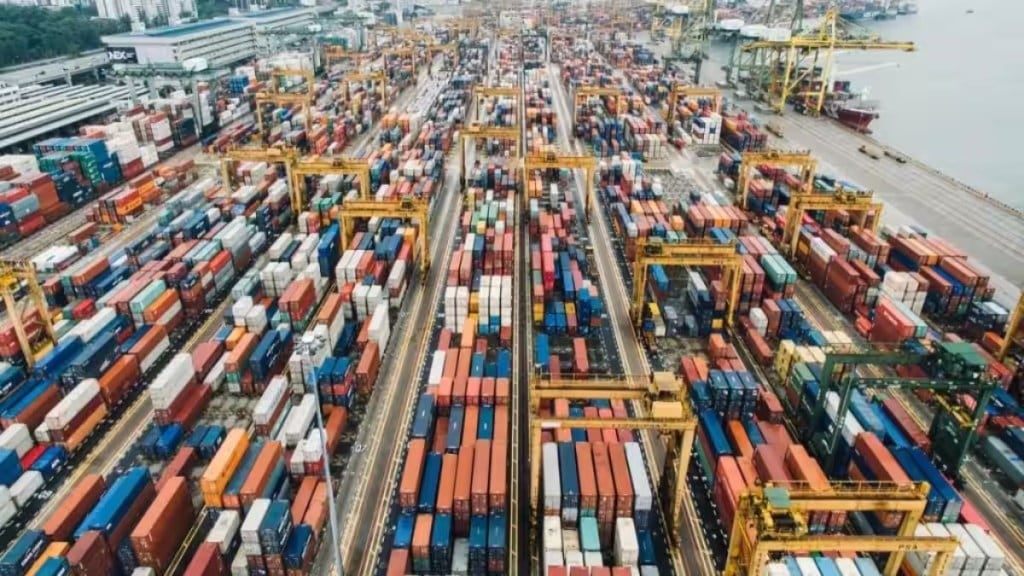By Anita Inder Singh
As Israel and Hamas keep their daggers drawn, destabilising the Middle East, New Delhi should keep alternative strategies in mind, especially its Act East policy. This becomes important as it is a region with which India may have to postpone the strengthening of economic and trading ties. The Act East policy is intended to strengthen India’s strategic and trade relationships with Asia-Pacific/East Asian/Southeast Asian countries—especially with Japan and South Korea, and with the ASEAN.
Trade has long driven development in the Asia-Pacific. For instance, Japan and South Korea have achieved high-income status through export-driven development strategies. Meanwhile, the strengths of emerging economies in the region explain why, in part. They account for 17% of global goods and services, with India contributing 1.8%. Their dual strategy aims at countering China while having it as a member of two of their three most prominent trade organisations—the Regional Comprehensive Economic Partnership (RCEP) and Asia-Pacific Economic Cooperation (APEC).
Simultaneously, they also hold that China can only be checkmated if their own economies grow stronger. The shift in global supply chains triggered by the pandemic, Russia’s war in Ukraine, and a possible prolonged conflict in the Middle East could affect their economies. Additionally, since their largest markets are in the Asia-Pacific itself, they have favoured trade integration in the region.
That is why intra-regional trade accounted for more than half of the total export growth of East Asia in the last decade, while exports to the US, European Union (EU), and Japan accounted for 30% in 2021. Semiconductors and other computer equipment, computers, TV sets, and mobile phones were exported from highly developed economies like Japan, South Korea, China, and Taiwan after being assembled in less developed Asia-Pacific countries including Malaysia and Vietnam, and sometimes also China.
One result has been the growth of consumer demand in East Asian countries over the last 10 years. This growth poses a political dilemma, since China has surpassed the US and the EU as their largest customer. They have dealt with this problem by lowering barriers to regional trade and subsequently to regional integration. This includes non-tariff barriers, especially on digital goods. Their rationale is that stronger intra-regional trade and economic integration will diversify supply chains. Also, such trade—and countries that demand their goods—can offer protection against uncertainties and shifts in global trade and growth.
India is not a member of the Partnership (CPTPP) which excludes China, and the RCEP and APEC, which include China. The 21-member APEC includes Asia-Pacific, Western, and Latin American countries. Home to over 2.9 billion people, it is a major force in shaping regional economic policies, promoting trade, investment and cooperation between its members, who can simultaneously share, and learn from, the experiences of other member-states.
India could benefit from joining APEC. This could provide APEC members with the opportunity to create more investment opportunities in the country. Membership could also increase their access to India’s labour force and expand its markets. Aligning with APEC by simplifying and harmonising trade procedures and regulations could boost India’s exports, attract foreign direct investment and support domestic initiatives like Make in India. To increase trade, India should also invest more in the ASEAN, which was a top recipient of FDI in developing regions (second after China in 2021).
Despite their different political systems and attitudes to China and the US, countries are also investing in one another. For instance, the Asia-Pacific’s fast-growing economies, sometimes hailed as the world’s factories, have expanding markets because their percentage of buyers is growing. At the moment, 54% of the ASEAN’s population comprises 29% of the world’s consumer middle-class population. Some 65% of the ASEAN’s population could join the international consumer class by the end of this decade. Optimists predict that East Asia could become the largest consumer market by then.
More domestic jobs and household consumption can act as a shock absorber for global economic crises. Additonally, policies to lower barriers to regional trade could deepen regional integration. This is why Asia-Pacific countries keep trying to reduce, if not remove, non-tariff barriers, especially in digital services.
Finally, India should pay more attention to the linkages between trade, investment and services that are integral to global supply chains (GSCs). Many of its trading friends—including Japan—complain about its increased protectionism over the last few years. Its limited economic liberalisation hampers its integration with GSCs. This, in turn, could stand in the way of taking advantage of the China-Plus-One strategy, which the West—and the World Bank—hope will dissuade countries from investing mainly in China and encourage them to diversify their businesses to alternative destinations.
India’s emergence as a reliable investment base and its introduction of tariffs that are comparable to those of Asia’s strong emerging market economies for its manufacturing sector could realise its potential for integration into GSCs. This would certainly be to India’s economic and strategic advantage.
Anita Inder Singh, Founding professor, Centre for Peace and Conflict Resolution, New Delhi. Views are personal.

